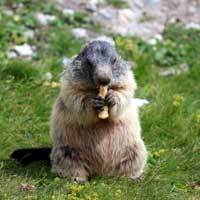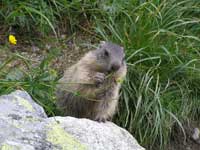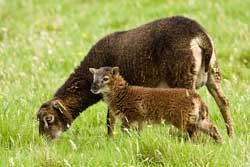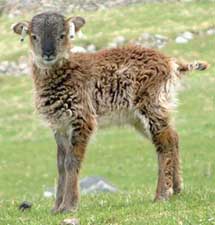Disclaimer: This material is being kept online for historical purposes. Though accurate at the time of publication, it is no longer being updated. The page may contain broken links or outdated information, and parts may not function in current web browsers.
Some animals are changing in surprising ways as their environments have grown warmer over the past few years.

This marmot finds an apple core treat.
Marmots that live in Colorado are a good example. Marmots are similar to squirrels. They are cute, furry critters that hibernate during the winter. When spring arrives, they come out of their burrows. And are they ever hungry! Fortunately, spring brings lots of nice, juicy green plants for them to eat.
Early spring
For the past 30 years or so, spring temperatures have been coming one day earlier each year. That gives the marmots one more month to eat and get fatter before going back into hibernation in the fall. With more food stored in their bodies, more marmots are surviving the winters.

Early spring brings luscious green grass to munch.
Also, marmot babies are being born sooner in the spring. That means the babies have more time to fatten up too. So more of the babies are surviving their first winter.
So not only are the marmots getting fatter, but there are lots more of them.
However, as their environment continues to warm, summer drought will dry up the food before the marmots are ready to hibernate again. Then, the earlier spring and longer summer will not help them at all.

Baby marmots fatten up too when spring comes early.
If food is scarce, small is better
While the marmots are getting fatter, the wild Soay sheep on islands near Scotland have been shrinking! Large animals have an easier time staying warm in cold weather than do smaller animals. However, as the sheep’s environment has warmed, the smaller sheep are surviving just fine too. Smaller lambs that often did not survive are now surviving. Also, younger and smaller mother sheep (who often did not survive the winter) are giving birth to smaller lambs. And smaller sheep eat less,

Smaller mother sheep are having smaller lambs.

Soay lambs are very tiny and fragile.

Soay lamb with ear rings?
Climate change may seem to be helping these animals. But this help probably will not last. As their environments continue to warm, the animals may find that drier conditions make food scarce.












